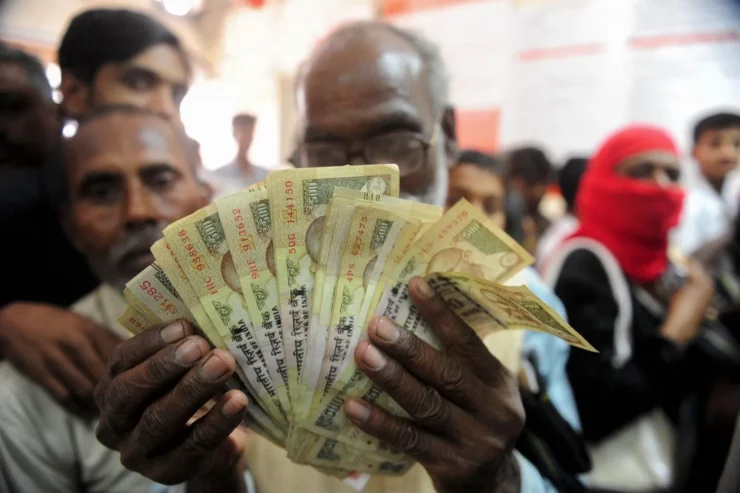
The Current State of Affairs in Pakistan
Pakistan’s economy has experienced a severe downturn in the past year due to a combination of factors. Bad governance, IMF loans, the political instability, the trade imbalance, the devastating floods of 2022 in Pakistan, and the Russia-Ukraine crisis are some of the pivotal factors that have worsened inflation and unemployment in the country. Many industries have scaled down or terminated operations in the country, causing widespread unemployment. Inflation is projected to reach 33% by the end of the current fiscal year. Currently Pakistan imports far more than it exports leading to declining forex reserves. The country has had to rely on China and other countries to lend it money. As a result of the dire circumstances, around 800,000 Pakistani professionals exited the country in 2022, primarily due to a lack of job opportunities and the burden of soaring commodity prices. Pakistan is also suffering from an energy crisis that the sub-par economy is exacerbating.
The rupee against the dollar has suffered immensely (currently around Rs 280 per $) and according to Bank of America, the rupee could depreciate to 340 against the US dollar. This economic crisis has led to an unprecedented event for Pakistan, with Fitch, Moody, and S&P downgrading the country’s rating in the previous months. The external debt stands at around $125.7 billion, while the forex reserves have improved to around $13 billion (from around $4 billion) due to a recent IMF bailout, this is still a low number and could mean the country might have to default on its debts. The IMF bailout means “…strict conditions when it comes to spending and structural reforms that are likely to further increase economic hardship for many common people.”
India’s 1991 Economic Calamity
Interestingly, Pakistan’s economic crisis is not a unique phenomenon in the region. Its neighbor and arch-nemesis, India, experienced a similar and in many ways worse ordeal in 1991. During that time, India faced a twin deficit, with its fiscal deficit reaching around 8.4% of GDP and its current account deficit hovering around 3% of GDP. India’s forex reserves stagnated between $1.3 to $1.5 billion, rendering the country unable to meet its import requirements even for three weeks. Consequently, the Indian rupee experienced sharp depreciation.
In parallel to Pakistan’s current crisis, India’s total external debt had risen to over $70 billion, leading to a downgrade by Moody’s. The situation became catastrophic, with the Chandra Shekhar government unable to pass the budget in February 1991. Borrowing from international creditors became costlier, and the country faced high inflation (around 14%), low growth, and rising unemployment. To stay afloat, India had to seek an emergency IMF bailout and desperately pledge its gold reserves. An estimated 20 tonnes of gold was sent overseas to raise $234 million initially. India sent 47 tonnes of gold in order to receive $400 miillion. This decision was massively unpopular and led to the Chandra Shekhar government’s exodus.
Manmohan Singh and India’s Economic Recovery
The turning point for India came when a minority government under Narasimha Rao’s leadership entered, and Manmohan Singh assumed the pivotal role of finance minister on June 24, 1991. Singh’s decisions were instrumental in reshaping India’s economic trajectory. One of the primary moves made by the new government was a phased depreciation of the Indian rupee, totaling 20% (9% initially and 11% later). Although this decision faced significant opposition, it was deemed necessary.
Under Singh’s leadership, India initiated economic liberalization with structural reforms, laying the foundation for a modern economy. A complete revamp of India’s trade policy framework aimed to create an export-oriented economy, and trade relations were augmented with neighboring countries, including China and other South Asian nations.
Despite challenges, India had to pledge gold reserves three times during the reform process to avert default. Although this was unpopular it was cited as necessary. Taxes in the country were decreased and the economy was opened up for foreign investments by ending monopolies & restrictive trade laws, dismantling the dated license Raj, and privatizing state-owned companies.
These economic policies aided the ailing country to reinforce its forex reserves. The result was phenomenal i.e., before the year’s end, the country had paid off its loans for which the gold had been pledged. These liberalization policies eventually led to the growth of the massive Indian IT sector and the economy as a whole.
What Pakistan Can Learn
From India’s 1991 economic crisis, Pakistan can draw essential lessons. First and foremost, bringing in competent and patriotic leaders who can make tough decisions is crucial. Secondly, desperate times call for desperate measures, and seeking a bailout from the IMF may be necessary to avoid default and create space for improving the economy, even though it comes with potential risks (this has already transpired). Thirdly, essential economic reforms are needed to restructure Pakistan’s economy, including streamlining bureaucracy, promoting digitalization, and leveraging natural resources for export-oriented growth. Lastly, Pakistan must exercise equanimity and determination in the face of political and public outrage, just as Manmohan Singh did during India’s reforms. Patience will be required as the crisis takes time to resolve. By learning from India’s experiences, Pakistan has the potential to come out of this economic downturn and lay the groundwork for a more stable and prosperous future.
Taut Bataut – is a researcher and writer that publishes on South Asian geopolitics, exclusively for the online magazine “New Eastern Outlook”.